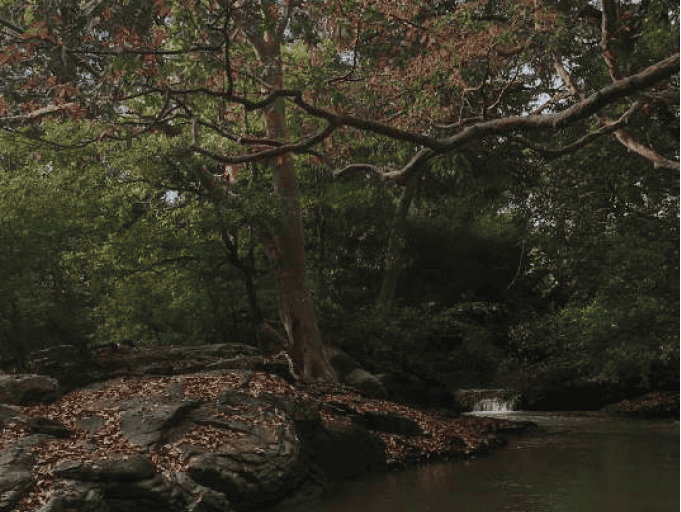Report sums up wealth of Sri Lanka’s biodiversity — and the threats it faces


- A new report identifies the main threats to biodiversity in Sri Lanka — river diversion, habitat loss, pollution, invasive species, overexploitation, and climate change — as well as updates the catalog of the island’s wealth of plant and animal life.
- The 6th National Report to the Convention on Biological Diversity is the most comprehensive analysis yet of the country’s biodiversity, with more than 100 experts from different fields contributing to the effort.
- It identifies five protected area clusters and recommends systematic interventions to link and expand these areas, while also stressing the need to safeguard biodiversity outside protected areas.
- It further recommends establishing a supervising body with wide powers to coordinate the activities of various government departments that currently manage wildlife, forests, biodiversity and marine environments separately.
COLOMBO — Sri Lanka has submitted its 6th National Report to the Convention on Biological Diversity, offering the most comprehensive view yet of the country’s wealth of plant and animal life and the threats they face.
More than 100 experts collaborated on the report, which Sri Lanka is required to submit as a signatory to the CBD.
The report updates the catalog of species diversity from the 5th National Report, covering those not included in the previous National Red List of Threatened Fauna and Flora published in 2012 or the National Biodiversity Strategies and Action Plans (NBSAPs) published in 2016. Among the new additions are species of scorpions, millipedes, termites, thrips and fireflies.
“We tend to describe biodiversity through taxonomy where the focus is mainly on species diversity, but biodiversity is more than that, so our main approach through the 6th NR is to map the distribution of these taxonomic groups and analyze the threats based on the distribution,” biologist Suranjan Fernando, a co-author of the report, told Mongabay.

Zonal maps
The distribution maps for groups such as butterflies, freshwater fish, birds, mammals, and the flora of Sri Lanka were previously identified in the 5th NR. While updating these zonal maps, the new report for the first time identifies unique zones for freshwater crabs, dragonflies, land snails, amphibians, reptiles, orchids, and marine and mangrove habitats.
Three main criteria were considered to assess a geographical area for taxonomic uniqueness and areas of special interest, Fernando said. First, they assessed whether an area hosts any point endemic species (those found nowhere else) or any range-restricted species, as these face a greater threat of extinction if the area is affected. They also looked at whether an area hosts high species diversity or unique species congregations compared to the surrounding zone.

The experts then evaluated the severity and spread of threats and issues in relation to each taxonomic group and particular habitats. Some areas face unique threats, and even similar habitats can face different threats in different areas, which the experts tried to identify as much as possible, Fernando told Mongabay.
High-elevation grassland habitats, for instance, are under threat mainly from agricultural expansion. But grasslands in the dry zone are threatened more by encroachment or fire. The team also identified the threats under whether they have a wide potential impact. The country’s sugar refineries, for instance, emit smoke that can spread widely through the air but that has a relatively low impact. But the waste generated by these plants, which is dumped in large, open pits, can seep into nearby waterways, affecting a large number of freshwater fish. In this case, even though the waste is concentrated in a small area, the potential impact from the threat it poses is high.
This exercise helped Fernando and his fellow authors to identify critical landscapes as part of an overall conservation strategy based on the distribution of biodiversity, habitats, protected areas, and conservation potentials and priorities. They identified the wet zone forests landscape, southeastern landscape, eastern landscape, northwestern landscape, and northern landscape, and recommended systematic interventions to link and expand these clusters.

Six major threats
The report identifies six major threats to Sri Lanka’s biodiversity. River diversion is one of them, particularly for freshwater fish, suggesting that this group of aquatic species may face the greatest risk compared to others. The other threats are habitat loss and fragmentation; pollution from both organic and inorganic waste; overexploitation; invasive species; and climate change.
Sevvandi Jayakody, a biologist from Wayamba University of Sri Lanka and another co-author of the report, said Sri Lanka urgently needs to address the threats to the island’s biodiversity, otherwise, the impacts could be irreversible. The report also highlighted that a greater part of endemic flora and fauna — those found only in Sri Lanka — are distributed in the wet and montane zones that have the least percentage of protected areas. Taking actions to conserve species outside protected areas is therefore very important as threats will be intensified for these species, Jayakody told Mongabay.
Policies and legislation exist to minimize or mitigate these threats, but it’s essential to have synergy between the agencies enforcing them, the experts said. Currently, responsibility for conserving wildlife, forests, and marine ecosystems falls under separate agencies. This, Jayakody said, suggests the need to establish a powerful supervising body that has the power to coordinate with the relevant agencies.

But with Sri Lanka spiraling into the worst economic crisis in its history, funding across government agencies has been drastically reduced. With millions of people across the country undergoing severe difficulty, and as poverty increases, threats to biodiversity such as habitat loss and overexploitation of species could be exacerbated, Jayakody said.
“Sri Lanka needs a paradigm shift in conservation where we need to focus on habitat-level conservation that will enable the country to reconcile biodiversity conservation with development, set goals, and develop a conservation strategy for the 22nd century,” said Eric Wikramanayake, chair of the Environmental Foundation (EFL) Sri Lanka, another co-author of the report. The EFL was the technical partner to the Ministry of Environment’s Biodiversity Secretariat in producing the 6th National Report.

Wikramanayake said it’s important to build the strategies based on conservation science and to focus on all species without being restricted to a few charismatic animals such as elephants and leopards.
Padma Abeykoon, director of the Biodiversity Secretariat, said that while Sri Lanka could achieve some of its biodiversity targets, many will be challenging, especially against the current economic backdrop. Sri Lanka says it would welcome international funds for conservation actions, but only if these don’t come attached with harmful conditions for the country.
Banner image of a lowland, wet, evergreen forest, a habitat that’s rich in endemism but threatened by a number of factors including the expansion of tea plantations, invasive species, mining, and tourism pressure. Image courtesy of Nadika Hapuarachchie.
Source
Language of the news reported
Related content:
Copyright © Source (mentioned above). All rights reserved. The Land Portal distributes materials without the copyright owner’s permission based on the “fair use” doctrine of copyright, meaning that we post news articles for non-commercial, informative purposes. If you are the owner of the article or report and would like it to be removed, please contact us at hello@landportal.info and we will remove the posting immediately.
Various news items related to land governance are posted on the Land Portal every day by the Land Portal users, from various sources, such as news organizations and other institutions and individuals, representing a diversity of positions on every topic. The copyright lies with the source of the article; the Land Portal Foundation does not have the legal right to edit or correct the article, nor does the Foundation endorse its content. To make corrections or ask for permission to republish or other authorized use of this material, please contact the copyright holder.
